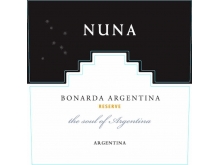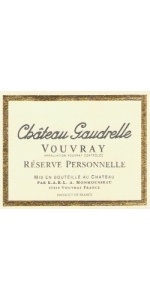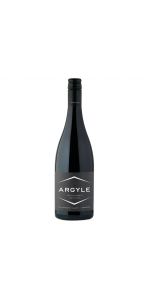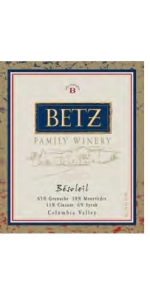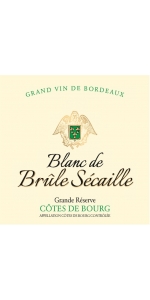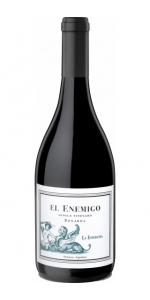Nuna Bonarda Reserve 2015
Alexandre Monmousseau Gaudrelle Vouvray Reserve Personelle is made from 100 percent Chenin Blanc
Fine Chenin Blanc typicity, with aromas of ripe apples and honeyed notes. Rich, smooth, rounded palate with great structure and weight. Has the acidity to support ageing for 10 years.
Argyle Reserve Pinot Noir is made from 100 percent Pinot Noir.
Pinot Noir thrives in Willamette Valley's long growing seasons with cool autumn breezes and sunny days. This culmination of extra time on the vine yields aromatics of crunchy dried leaves, pomegranate molasses, black tea leaves, and tart cherries. Earthy undertones and great textured tannins that continue to smooth out with time - adding to the body and longevity.
Review:
Rich and polished, this Pinot offers multilayered raspberry and blueberry flavors. Shows dusky spice and fresh forest floor accents while building structure toward refined tannins.
-Wine Spectator 93 Points
Blending Detail:
- 49 % Grenache
- 20% Syrah
- 16% Cinsault
- 9% Mourvêdre
- 6% Counoise
Grenache speaks loudly in the Bésoleil with notes of pomegranate, red raspberry, and strawberry leaf. The Counoise and Cinsualt bring bing cherry fruit and blueberry notes to the table, complicated by pepper and garrique. Mourvedre donates a wild meatiness to the blend, and a purple hue. Syrah rounds things out, adding texture, and flesh to the palate.
Review:
The first vintage where they’ve pushed the bottling back to give the cuvee 16-18 months in barrel, the 2015 Besoleil is a dead ringer for a high-quality Chateauneuf du Pape and offers perfumed notes of herbes de Provence, kirsch, licorice and sweet spice. It’s medium to full-bodied, textured and fruit-forward, with a hedonistic yet elegant profile that’s going to evolve gracefully.
Robert Parker 91-93 Points
Brulesecaille Blanc Grande Reserve is made from 75% Sauvignon Blanc, 25% Sauvignon Gris.
Average age of the vines is 25 years.
Manual harvest from September 19th-20th 2016.
Direct press at low pressure (whole cluster) with low amount of SO2, settling at 10°C.
Addition of yeast and alcoholic fermentation in casks 400 liters.
Raised on the lees for 6 months with regular batonnage (stirring of the lees).
Bottling in april 2017.
Fish, seafood, white meats, fine goat cheeses.
Cellar for up to 8 years. No need to decant before serving.
El Enemigo was founded by historian Adrianna Catena, who is also Nicolas Catena’s youngest daughter, and Catena Zapata’s chief winemaker Alejandro Vigil in 2009. These two legendary figures on the Argentine wine scene came together over a mutual love for literature and philosophy, and decided to create their own wine label that would offer a unique taste of Argentina’s exceptional terroir and its Old World winemaking heritage.
Today the brand is responsible for many of the most exciting wines coming out of Argentina, including this sensational single vineyard Bonarda. Bonarda is little-known in Europe these days, but it has a special place in Argentina where it’s considered the nation’s second red wine after Malbec. La Esperanza is a very special 150 year old vineyard that was about to be uprooted when it was discovered by Alejandro Vigil. Luckily he was able to save 5 hectares from which he makes a few hundred bottles of this wine each vintage.
Once in the winery this precious fruit is vinified with wild yeasts and the young wine ages in large foudres that are over 100 years old. The result is a remarkably elegant and vibrant red that’s bursting with luscious red cherries, plums and blackberries as well as hints of dark chocolate. A charming wine to serve with tomato-based dishes thanks to the refreshing acidity, smooth tannins, and bright fruit flavours.
Review:
Blackberry, red-plum and graphite on the nose, as well as herbal and smoky notes. It’s medium-to full-bodied with firm tannins. Fleshy texture on the palate with structure and a ink-like feel. Savory finish. Hints of chocolate at the end. Try after 2023.
-James Suckling 94 Points
Varietal-100% Bonarda
Vineyard- El Mirador Vineyard in Rivadavia, 2,132 ft. Elevation. Soil composed of mostly sand.
Ageing & Vinification- Wild Yeasts with 25 days maceration , 12 Months ageing in 100-year-old foudre.
Tech Data- 13.5% ABV, Acidity 6.1, pH-3.7
Review:
Sour cherries, blueberries and spice box on the nose. Medium-to full-bodied with firm tannins. Savory and fleshy on the palate with some structure, leading to a flavorful and fruity finish. One of the best bonardas out there. Try after 2023.
-James Suckling 94 Points
Nuna Bonarda Reserve is made from 100% hand-selected Bonarda from the best parcels of the estate.
The grapes are carefully chosen and fermented in small lots to preserve the vineyard identity.
Alcoholic fermentation for 12 days with indigenous and selected yeasts, at temperatures of 26 and 30°C, combining, remontage, pigeage and delestage in order to obtain the best quality of tannins and structure.
The resulting wine is aged for 12 months in French oak barrels to fully reveal the character of the Andean terroir.
Purple-colored Bonarda offers a fruity, fresh nose featuring plums, mulberries and violets. Fruity, forward and easy-going, Bonarda is the perfect match to Argentine bistro cuisine.
The Chakana Estate
Looking for Chakana's other labels?
Click below:
Malbec, Bonarda Argentina, Cabernet Sauvignon
Elegant and mature wines with 12 months of oak aging, produced
only with grapes grown in our own estates.
Ayni is our icon wine. It is the result of our permanent quest
for the best Malbec terroirs that Mendoza can offer. This wine
comes from the gravely limestone soils of Altamira: powerful
but fresh and lively, this 100% Malbec has been aged in
French oak barrels for 18 months. It is presented in 6-bottle
wooden cases.
Chakana Estate Selection is a line of wines which represent the
best terroirs of each of our estates. Aged in French oak barrels
for 12 months these wines give pre-eminence to the expression
of terroir rather than oak. In every wine we try to craft a drinkable
and seductive style through the careful management of our
soils and grapes and in accordance with our consumers’ taste.
Chakana winery was founded by Juan Pelizzatti on May 2nd, 2002. Juan was driven to enter the wine industry first and foremost by his passion for wine, and also by the desire to invest his time and money on a product of agriculture. Although Juan did not know it at the time, the company was founded on the same day the Chakana was celebrated on the Andes highlands: on that same day, the Southern Cross (the Chakana for the Inca people) becomes vertical in the night Andean sky.
Juan's mission is to create an integral experience to introduce world consumers to the taste and culture of the Andes. His vision is to become one of the top 20 exporters of wine from Argentina, by consistently offering outstanding value for money.
"An incredible discovery for me, this winery was founded a decade ago and named after the Southern Cross ("Chakana" is the local Indian dialect for that constellation). It is located approximately 20 miles south of Mendoza in Agrelo. All three of these wines are highly recommended, and all are fabulous bargains in Malbec." - Robert Parker's Wine Advocate (June 2012)
Wine is currently produced in four different levels at Chakana, by winemaker Gabriel Bloise:
Entry Level: Maipe
Reserve Level: Maipe Reserve, Cueva de las Manos, Nuna
Estate Selection
Ayni
The Chakana Estate Vineyards
Our grapes are grown in our own estates located in diverse premium micro-regions of Mendoza.
Each of them contributes its character to the final blend of our top quality wines.
Our wines are made in a state-of-the-art 2 million liter facility located in our Agrelo estate.
The Three Chakana Vineyard Areas:
FINCA AGRELO
LOCATION: AGRELO, Lujan de Cuyo, Mendoza
Description: 120 ha. planted with different varieties between 2002 and 2010. Mainly Malbec,
Bonarda, Cabernet Franc, Viognier and Syrah.
Altitude: 960 meters above sea level.
TERROIR: Varied. Deep clay to loam. Gravel in some areas. Dry and cool climate with important
amplitude in temperature.
Wine Profile: Medium-bodied, elegant, fruity.
FINCA TERRADA
LOCATION: MAYOR DRUMMOND, Lujan de Cuyo, Mendoza.
Description: 21 ha. 100 year old Malbec.
Altitude: 919 metres above sea level.
TERROIR: Loam and clay with 70 cm deep gravel. Some limestone. Urban
influenced climate, relatively warm.
WINE PROFILE: Complex, ripe fruit.
FINCAS ALTAMIRA
LOCATION: ALTAMIRA, Valle de Uco, Mendoza
Altamira I |16 ha. Malbec. Altitude: 1,068 meters above sea level.
Altamira II |26 ha. Malbec, Pinot Noir, Chardonnay, planted in 2006. Altitude: 1,097 meters above sea
level.
TERROIR: Sandy-loam with gravel at 50 cm depth. Dominated by limestone. Temperate climate.
WINE PROFILE: Full-bodied and mineral.
They also source wines from contract suppliers in Ugarteche and Medrano, for entry level wines, and in Vista Flores, for Estate Selection & Ayni levels.
The Wine Making Team:
WINEMAKING CONSULTANT: ALBERTO ANTONINI. Alberto is an Italian winemaker with a pioneering role in
the discovery and development of high quality Malbec. Alberto has brought to us his profound knowledge of
the wine industry, his uncompromising commitment to authenticity and the belief that Argentina will become
one of the leading winegrowing regions of the world.
VITICULTURE CONSULTANT: ALAN YORK. Alan is one of the world’s leading consultants on biodynamic
viticulture. He is also a permanent source of inspiration and insight into the relationship between man, spirit
and nature.
WINEMAKER: GABRIEL BLOISE. Gabriel is one of the stars of the younger generation of Mendoza’s winemakers.
30 years old, he has already made 15 vintages in top estates in some of the most important winegrowing
areas in the world: Tuscany, Priorat, Australia, California, North Carolina, Salta and Mendoza. He is a tireless
explorer of the relationship between nature and its effect on the aromas in wine.
TERROIR CONSULTANT: PEDRO PARRA. Pedro's expertise helps us to understand how to identify and
manage the soil in each plot of our vineyards. His palate is fine-tuned to understanding the impact of soil
structure on the taste of wine. This has made him one of the 50 most influential people in wine according to
Decanter Magazine.
- back
Weingut Prager Achleiten Riesling Smaragd is made from 100 percent Riesling.
Franz Prager, co-founder of the Vinea Wachau, had already earned a reputation for his wines when Toni Bodenstein married into the family. Bodenstein’s passion for biodiversity and old terraces, coupled with brilliant winemaking, places Prager in the highest echelon of Austrian producers.
Smaragd is a designation of ripeness for dry wines used exclusively by members of the Vinea Wachau. The wines must have a minimum alcohol of 12.5%. The grapes are hand-harvested, typically in October and November, and are sent directly to press where they spontaneously ferment in stainless-steel tanks.
Achleiten sits east of Weißenkirchen and is one of the most famous vineyards in the Wachau. The steeply-terraced vineyard existed in Roman times. Some sections have just 40 cm of topsoil over the bedrock of Gföler Gneiss, amphibolitic stone, and slate. “Destroyed soil,” as Toni Bodenstein likes to say.
Tasting Notes:
Austrian Riesling is often defined by elevated levels of dry extract thanks to a lengthy ripening period and freshness due to dramatic temperature swings between day and night. Wines from Achleiten’s highly complex soils are famously marked by a mineral note of flint or gun smoke, are intensely flavored, and reliably long-lived.
Food Pairing:
Riesling’s high acidity makes it one of the most versatile wines at the table. Riesling can be used to cut the fattiness of foods such as pork or sausages and can tame some saltiness. Conversely, it can highlight foods such as fish or vegetables in the same way a squeeze of lemon or a vinaigrette might.
Review:
The 2020 Ried Achleiten Riesling Smaragd offers a well-concentrated, fleshy and spicy stone fruit aroma with crunchy and flinty notes. It needs some time to get rid of the stewed fruit flavors, though. Full-bodied, fresh and crystalline, this is an elegant, complex and finely tannic Riesling that needs some years rather than a carafe to polymerize the tannins and gain some finesse. Tasted at the domain in June 2021.
At Prager, I could not determine that 2020 would be inferior to the 2019 vintage; on the contrary, the 2020 Smaragd wines fascinated me enormously in their clear, cool, terroir-tinged way. A 38% loss had occurred mainly because of the hail on August 22, although predominantly in the Federspiel or Riesling vineyards. There was no damage in the top vineyards such as Ried Klaus, Achleiten or Zwerithaler. "Interestingly, the vines are in agony for about two weeks after the hail. There was no more growth, no development of ripeness and sugar," reports Toni Bondenstein. The Veltliner then recovered earlier, while even picking a Riesling Federspiel in October was still a struggle. "Why Riesling reacted more intensively to the hail, I don't know myself either," says Bodenstein. Whole clusters were pressed to preserve acidity and to compensate for the lower extract, and compared to 2019, the 2020s were left on their lees longer. In June, however, the 20s in particular showed outstanding early shape.
-Wine Advocate 94 Points
Light yellow-green, silver reflections. Yellow stone fruit nuances with a mineral underlay, notes of peach and mango, a hint of tangerine zest, mineral touch. Juicy, elegant, white fruit, acidity structure rich in finesse, lemony-salty finish, sure aging potential.
-Falstaff 95 Points
La Despensa Boutique Pool Blend 75% Cinsault, 15% Pais, 5% Marsanne and 5% Roussanne.
A genuinely unique wine - La Despensa is the only producer of Cinsault in Colchagua and Pais from this valley is also extremely rare! The Cinsault and the 2 whites come from a new vineyard planted in 2017 and the Pais from a 150 year old, dry-farmed vineyard in Pumanque about 20 minutes from the winery that they run themselves organically. The Cinsault and Pais give notes of raspberry and strawberry and the white Roussanne and Marsanne a little mouthfeel and a hint of tropical fruit.
Organically grown grapes (not certified) from our own vineyard in Santa Ana, and Pumanque in the Colchagua Valley. Irrigated as sparingly as possible via drip irrigation (dry-farming for the 150 year old Pais). Hand harvested and sorted personally by me in the vineyard (I personally check every single bunch), then destemmed with the crusher removed from the destemmer. Grapes are fermented in open top bins and concrete tank and blended immediately after pressing. MLF occurs with the wine already blended. Wines are racked in November and again in January before being bottled after about 10 months ageing in 50% neutral oak barrels and 50% Flextank.
Versatile, goes well with beef, chicken, pasta, great for Summer BBQs.

